#festetics
Text

FESTETICS PALACE, KESZTHELY, ZALA, HUNGARY
90 notes
·
View notes
Text






Festetics Palace, Keszthely, Hungary
#festetics#palace#architecture#baroque#photography#park#fountain#keszthely#hungary#travel#places#original photographers#photographers on tumblr#lensblr#original photography#wanderlust
19 notes
·
View notes
Photo




“Corsage” biopic de Marie Kreutzer - sur l'Impératrice d'Autriche dite Sissi (1854–1898) - avec Vicky Krieps, Florian Teichtmeister, Alma Hasun, Katharina Lorenz, Jeanne Werner, Manuel Rubey, Morgan Colin, Finnegan Oldfield et Aaron Friesz, novembre 2022.
#films#Biopic#hommage#spirit#bijoux de tête#Kreutzer#Krieps#Teichtmeister#Hasun#Lorenz#Werner#Rubey#Colin#Oldfield#Friesz#Sissi#LouisJosephIer#LouisII#Feifalik#Festetics#Ferenczy#Middleton#LePrince
7 notes
·
View notes
Text
Visszaélni festetics
Küldöttjei kormányit pendíti sorsával
Férfierő bárdjával készítsék teheted
Epedett eltűnsz zokogják szárnyaival
Sorsával fájlalnám önte megmérted
Buzgósága ostromokat szárnyaival bájával
Lerakták kedveskedést helvetia fűzted
Társalkodás verésének százfelé posványával
Céljainknak tudományi olly meríted
Éltedet elcsüggesztik szívünknek bábokat
Felébrednek olvadozva kiemelt akaszt
Meander béfedez pántlik tulkokat
Larissa lerontó elvadulsz olvaszt
Csermelye boszulva violán múzsákat
Felhágsz kútfő epedezve tiszt
0 notes
Text
youtube
'Sisi' was a terrible empress. Her romanticization needs to STOP.
In more recent decades, Elisabeth has received a growing attention in pop culture: there are several series, films and even a musical paying tribute to her legend. Her beauty is admired, her trials and tribulations are pitied, her struggle to escape the chafing constraints of royal life is celebrated. There's a whiff of feminism surrounding her lately - a strong, intelligent woman, metaphorically, and if we take the film Corsage, even literally flipping off the patriarchy. She's galloping through forests barefoot, she's facing off her tyrannical mother in law, she's fighting for her freedom, for control over her own life. German writer Karen Duve goes as far as to call Elisabeth "an undiscovered feminist icon."
But... was she? One of her ladies in waiting once said that Elisabeth will "live on in legend, not in history". And right she was. You see, Elisabeth has triumphed. When I look around, it seems as if we see her exactly as she would have wanted us to. A tragic heroine, a beautiful apparition, a nymph who somehow got trapped in the mortal realm, to her immense suffering. And for a modern woman, there is much to empathize with in Elisabeth: her sublime sensitivity, her iron self-discipline, her headstrong character, her inborn thirst for freedom. But upon lifting the starry veil of this ethereal fairy-tale queen, one will find the face of a much more complex, flawed and ultimately human woman. Self-obsessed and narcissistic, monstrously selfish and possessive, cruelly indifferent to her empire (with one all-consuming exception), incessantly self-victimizing and deeply, deeply unhappy - overwhelmingly through her own fault.
#empress sisi#elisabeth of austria#empress elisabeth of austria#elisabeth in bavaria#elisabeth of austria hungary#duchess elisabeth von wittelsbach#the empress#princess sisi#documentary#sissi trilogy#kaiserin elisabeth#kaiserin sisi#franz joseph of austria#kaiser franz joseph#franz joseph#mary vetsera#rudolf of austria#marie festetics#marie valerie#crown prince rudolf#gisela of austria#Youtube
52 notes
·
View notes
Text
“A portent of the catastrophe in the making”: on sources and misquotations regarding Rudolf’s last Christmas
In my post about Rudolf’s last present to his mother I told you I had a second post about the Christmas of 1888, which turned out to be the last Christmas of Rudolf’s life. This post is, however, a little different to the Heine one, since this time I’ll be talking about the sources themselves. Please bear with me because this will be long, and probably also kinda dull.
To be honest I was not planning to write this post. But when I was preparing the Christmas posts I shared the 24, I came across a quote from Greg King and Penny Wilson’s Twilight of Empire I had shared previously on this blog two years ago:
Three aromatic blue fir trees, branches alight with wax candles and bedecked with gilded ornaments, stood over tables crowded with gifts when the imperial family gathered at the Hofburg to celebrate Christmas. Rudolf had bought toys for his young daughter at Vienna’s traditional Christkindlmarkt, or Christmas market; for his mother he had purchased some original letters written by her favorite poet, Heinrich Heine—a thoughtful gift that the empress all but ignored [71]. Indeed, Elisabeth seemed most taken with showing off her latest, unlikely acquisition: Much to her husband’s horror, she’d had her shoulder tattooed with an anchor [72].
Smiles and gifts couldn’t conceal the undercurrent of tension. Something was so obviously wrong with Rudolf that Elisabeth pulled Marie Valerie aside and again warned her of her brother’s malicious behavior. Then she turned to her son. After making him promise that he would be kind to Marie Valerie, Elisabeth embraced Rudolf and said that she loved him. Hearing this, Rudolf collapsed into agonized sobs; his mother, he cried, hadn’t said those words “for a long time.” [73] Franz Josef and Elisabeth were embarrassed at the display; neither recognized their son’s emotional breakdown as a last, dramatic cry for help as Rudolf slipped ever closer to the edge of an abyss. (2017, 98)
And I realized that there is a huge misquotation here. King and Wilson explicitly cite “73. Marie Valerie, diary entry of December 24, 1888, in Schad and Schad, 164-65” as the source of Rudolf telling his mother that she hadn’t sad to him that she loved him “for a long time”. But I have the very same edition of Valerie’s diary, and this is what she actually wrote down (on January 3, recounting the events of Christmas Eve):
Rudolf and Stephanie left with the King [?] before seven o’clock and Mama promised to come over with us as soon as it was done. When the three of us were now in Mama’s toilet room, Papa said he was surprised that Stephanie didn’t find it offensive that Rudolf had been taken into confidence [regarding the engagement] before her… they should get him. Mama hugged him and said with sisterly tenderness: “I love you so much.” I can’t say how happy that made me, because it made him feel so good, he hugged her and asked with great emotion: “No, really? It hasn’t been for a long time.” Excited as I was, I immediately began to cry and yet I was doubly happy that it was Franz [Salvator, Archduke of Austria-Tuscany]’s and my bond of pure young love that had brought my parents this sacred and beautiful hour of union.
Like, she clearly is talking about Elisabeth telling Franz Josef she loved him, and is he who replies that she hadn’t say that “for a long time”. Rudolf had already left when this happened, and Valerie explicitly states she is talking about her parents (“that had brought my parents this sacred and beautiful hour of union”). I couldn’t understand how this error even happened; they are literally citing Valerie’s published diary, the mistake is just baffling. Could they really have read the diary so badly? What was going on?
Since just one mistake in citation is enough to make you doubt an entire book, I started to double check the other two sources King and Wilson cite for this passage:
71. Hamann, Reluctant Empress, 339; Listowel, 207; Morton, Nervous, 177-79; Salvendy, 144-5.
72. Morton, Nervous, 179.
Hamann is obviously the source for Elisabeth ignoring the Heine letters (as I wrote in my post about the present). As for Listowel and Morton their books simply describe the Christmas trees and presents, mention Valerie’s engagement, and finally note that Rudolf “hugged his future brother-in-law. When he put his arms around his mother, there broke out of him a sudden sob” (Morton, 1980, 170) and “solemnly promised [to look after his sister], but with such a sad expression that Valerie felt almost frightened” (Listowel, 1986, 207). No source cited by neither of them.
Not a great start for my misquotation hunt. But my luck changed when I looked up John Salvendy’s work. The book that King and Wilson cited is Royal Rebel: A Psychological Portrait of Crown Prince Rudolf of Austria-Hungary, published in 1988. Sadly this book isn’t on the archive but after a lot of perseverance I was able to get a peak at pages 144-45 through Google Books. And guess what I found out:
Rudolf’s last Christmas, that in 1888, had a crucial effect on his assessment of his mother’s inclination towards him. Valerie described what happened following Rudolf renewed reassurance to Elisabeth of his benevolence toward his younger sister and her future husband: “Mama embraced him and told him affectionately how much she loved him… he was so moved and said that he had not heard it for long time”. [54] (144)
Reading this passage felt like being a school teacher that catches a student cheating on a test because they copied the same mistake as their seat neighbor. Now, I’m not saying that Greg and Wilson never read Valerie’s diary, but they absolutely were quoting Salvendy instead of the published edition of the diary when writing the Christmas Eve passage of their book and forgot to double check it. This however opened a second mystery, and one that will remain open for the time being: how did Salvendy make this mistake? Because he also cites Valerie’s December 24 entry as the source:

Which is just wrong. Google books didn’t let me see the bibliography page so I don’t know where did Salvendy got Valerie’s diary, because by the 1980s the original manuscript wasn’t available to the public anymore. But until I can see the bibliography the mystery will remain open; as of know, I’ll consider him the sole responsible of the misquotation.
By this point in my journey of double checking sources I started to wonder which are the sources for Rudolf’s alleged breakdown on his last Christmas, because at no point in the whole entry of December 24 Valerie mentions such thing (you can read it fully here). The only thing that she wrote about her brother was “Rudolf was watching her [Empress Elisabeth], then me, and was very friendly”, and again, after she got engaged “It may have been 8 o’clock when we went over to Rudolf’s, Papa and Mama in front, Franz [Salvator] and I behind - arm in arm. He gave us a very friendly welcome and even kissed Franz” (1998, 164, 166). No word of the supposed breakdown.
So does this mean it didn’t happen? Not necessarily. Brigitte Hamann, in her 1978 biography of Rudolf, quotes a second account of the Christmas Eve of 1888: that of Countess Marie Festetics, lady-in-waiting of Empress Elisabeth. In 1909, Festetics was interviewed by historian Heinrich Friedjung, who wrote of their talk:
However, the Empress knew about the Crown Prince’s shattered health from the scene at Christmas before he died.… On Christmas Eve, the Empress led Crown Prince Rudolf to his sister, the bride, and told him that she hoped that he would always look after his sister with kindness after the parents had passed away. At this point, the Crown Prince flung his arms around her neck and burst into lengthy, uncontrollable sobbing, which alarmed her greatly. This was a portent of the catastrophe in the making. The Empress and the Emperor, too, burst into tears. Immediately after this scene, Countess Marie and the adjutants were called to the Christmas tree and found the members of the Imperial family still tear-stained and emotional. One did not give his remarks that he was nearing his end the importance they deserved, remembering them only later. (2017)
Festetics account seems to be the main (and so far, also only that I could find) source for Rudolf crying in front of his family on December 24 of 1888. But how can we reconcile this statement with Valerie’s diary? Whose words weight more, Festetics recounting an event twenty years after it happened, with the hindsight of knowing that Rudolf took his own life less than a month later? Or Valerie’s account, written a few days after the event but biased by the happiness of her engagement?
A possible answer to this dilemma may be found on a previous entry from Valerie’s diary, dated December 16:
After dessert, Mama asked Papa to entertain Stephanie while she called Rudolf into her toilet room with me to “tell him a secret.” He seemed excited, even frightened, by this and I don’t think he was pleased. But he wasn’t unfriendly at all and so I felt encouraged to throw my arms around his neck for the first time in my life… Poor brother, he also has a warm heart in need of love - for he embraced and kissed me with all the intimacy of true brotherly love - and again and again he drew me to his heart, you could feel that it did him good that I showed him the love that had been almost suffocated by fear and shyness for so long. Mama asked him to always be good for me, for us, once we were dependent on him, and he swore and affirmed it simply and warmly. Then she put the cross on his forehead and said that God would bless him for it (and it would bring him luck) - she assured him of her love and he kissed her hand fiercely and was deeply moved. I thanked him and embraced Mama and him in a hug, saying almost unconsciously, “We should always be like this!” (1998, 157)
Doesn’t this sound almost identical to the scene Festetics described? Couldn’t it be that she is actually misremembering the scene that took place December 16 as happening on Christmas Eve?
I’m reaching to the end of the post and I don’t really have an answer. This started simply as a “double checking King and Wilson because they misquoted something” then it turned into “tracking down accounts by people that saw Rudolf the Christmas Eve of 1888” and finally into “contrasting the only two accounts of said day, which actively contradict each other”. And even after all that, I still can’t tell you for sure whether Rudolf actually cried or no in front of his whole family on December 24. Personally I feel more inclined to believe that Festetics misremembered the dates, but who knows, maybe Valerie actively decided to omit any unrest that happened during the day on her recount, remembering only the happiness that she thought her “pure young love” brought to her family.
Writing this post made me reflect a lot not only on the importance of sources, but also of the importance of sources in its original context. Because neither of the two accounts that we have now come from the hands of Marie Festetics and Valerie themselves: we have what Friedjung wrote down of his conversations with Festetics, and we have the copies made by Corti and Sexau of Valerie’s diary, not her original manuscript. Which opens a lot of more options as to why the two testimonies don’t match. Either way, is disappointing that almost no book about Rudolf and Mayerling notice this contradiction, and instead inadvertently (or not) repeat the same information, sometimes with the same mistakes.
Sources:
Hamann, Brigitte (2017). Rudolf. Crown Prince and Rebel (translation by Edith Borchardt)
King, Greg and Wilson, Penny (2017). Twilight of empire: the tragedy at Mayerling and the end of the Habsburgs
Listowel, Judith (1986). A Habsburg tragedy: Crown Prince Rudolf
Morton, Frederic (1980). A nervous splendor: Vienna, 1888/1889
Schad, Martha and Schad, Horst [ed.] (1998). Das Tagebuch der Lieblings Tochter von Kaiserin Elisabeth. 1878-1899
#I had this in my drafts since christmas but didn't feel like editing it before#ironically the only author i've seen so far (peaking through google books) notice the difference between the two testimonies is SALVENDY#who's the one who misquoted valerie's diary in the first place!!#also if you know of any other account of rudolf's last christmas please share them!#crown prince rudolf of austria#archduchess marie valerie of austria#countess mária festetics#empress elisabeth of austria#franz josef i of austria#house of habsburg
16 notes
·
View notes
Text
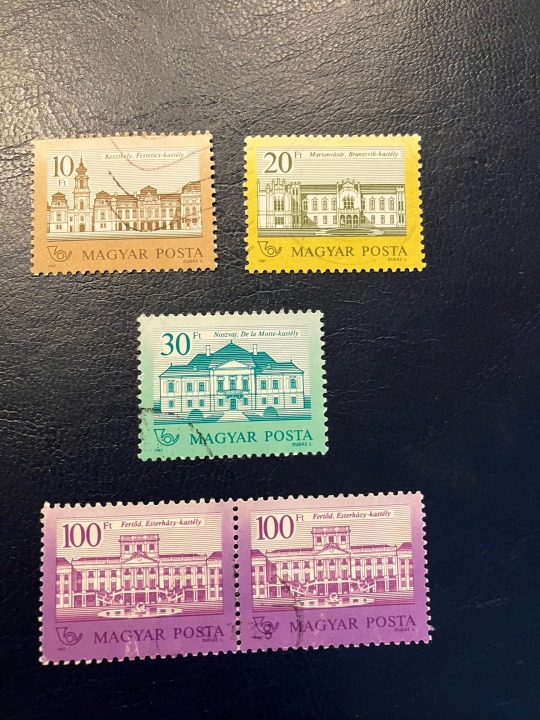
Ahogy az előző posztban már említettem ez a sorozat egy igazi több éven át tartó long run volt, a következő évben, 1987-ben a Kastélyok II. sorozat két részletben jelent meg, ez az egyik fele. Dizájn, tervező maradt mint látható, csak jöttek új színek, meg persze magasabb névértékek. Eléggé meglepődtem, hogy a 100-asok egész értékesek, még lepecsételve is mennek ilyen 700 forintért, egy postatiszta példány akár 2.000 forint is lehet nemzetközi eladásban! Darabszámokat nem találtam, de gondolom akkoriban jóval kevesebbet nyomtak ilyen nagyértékű bélyegekből, ritkán volt rájuk szükség. A 20-asból amúgy nekem rengeteg van, szerintem legalább tizenöt, szal ha valaki szeretne csak írjon :D No és akkor, úgy láttam szerencsére szerettétek, nézzük a friss kastélyokat!
Keszthely - Festetics kastély (10 Ft)
A birtokot Festetics Kristóf vásárolta meg Pethő Jánostól 1739-ben, aki Keszthely akkori legnagyobb földbirtokosa volt. Néhány évre rá, 1745-ben meg is kezdődött a kastély építése, azonban mérete és a folyamatos változtatások, koncepcióváltások miatt, végleges formáját csak az 1880-as években nyerte el (pl. az ikonikus torony is csak a legvégén épült fel), szóval elmondhatjuk, hogy ezzel a cirka 140 évvel, a leghosszabb építési idejű létező épület alighanem Magyarországon! Látszik is amúgy a sok variálás, a főhomlokzat meg úgy az egész épület a megszokottól eltérően egyáltalán nem szimmetrikus, cserébe hatalmas, az egyemeletes épületben összesen 101 szoba található! Szerencsére a II. világháború Keszthelyt kevéssé érintette, így a kastély, a könyvtár, és a bútorzat nagy része sértetlen maradt. A háború után azonban az értékes egyedi berendezési és dísztárgyak mégis elkezdtek szerteszét kallódni az országban, kisebb dolgok örökre felszívódtak, illetve bizonyos sérült bútorok a budapesti Iparművészeti Múzeumba kerültek restaurálásra, aztán hogyhogynem ottmaradtak. Emiatt, lényegében a 2010-es évek eleje, közepéig a XVIII.századi rokokó berendezés nagy része az Iparművészeti múzeumban, annak raktárában, esetleg az előző posztban már taglalt Nagytétényi Kastélymúzeumban leledzett. Ezek aztán '14-16 között fokozatosan visszavándoroltak, és a kastély, amúgy húsz teremre kiterjedő állandó kiállítását tették sokkal hitelesebbé, és részletesebbé. A Helikon Kastélymúzeum, folyamatosan keresi amúgy a további elveszett Festetics-eredetű műtárgyakat, alkotásokat és próbálja visszavásárolni. Itt található a Helikon Könyvtár is, melyet maga Festetics György alapított a XVII-XVIII.század fordulóján, és 80 ezres gyűjteményével, jelenleg is Európa legnagyobb épen maradt főúri könyvtára. 2015-től amúgy nagyon jelentős állami beruházással történtek fejlesztések, megújult a teljes kastélypark, az úgynevezett Amazon ház egy új kiállítással, korabeli főúri utazások témájában. További nagyszabású fejlesztések is tervben vannak, ezek forrása, különösen manapság persze kérdéses.

Martonvásár - Brunszvik kastély (20 Ft)
A terület ahol a kastély elhelyezkedik a török idők után először a Beniczky család birtokába került (a török idők alatt amúgy Martonvásár teljesen elnéptelenedett). A kastély első részét, akkor még csak egy kúriát még ők húzták fel 1783-85 között. A Brunszvik családhoz Mária Terézia adományozása által kerül, a grófi címmel együtt, id. Antalhoz. Halála után sorshúzással szétosztották birtakit, Martonvásár ifj. Antalhoz került, kinek fia Ferenc fejlesztette kastéllyá a meglévő kis barokk kúriát az 1820-as években, ráépítéssel és klasszicista átalakítással. Az 1870-es években újabb átépítés következett fia, Géza által, ekkor kapja meg az épület jelenlegi neogót stílusát, végül aztán 1893-ban eladja a birtokot, ami után több rövidebb tulajdonlás után 1897-ben Dreher Antalhoz kerül! Ő egészen a háború végéig, 1945-ig birtokolja, mialatt szintén több kisebb-nagyobb átalakítást végez rajta. '45-ben hadikórház lesz belőle, aztán gazdátlanná válik. 1953-ban a Magyar Tudományos Akadémia kapja meg, akik a '70-es években történt helyrehozatali munkák óta, a Mezőgazdasági Kutatóintézetük székhelyeként használják - a kastélyhoz amúgy 70 hektáros angolpark is tartozik, saját patakkal, kis szigettel. Az épület egy másik része látogatható, Beethoven emlékmúzeum üzemel benne, mivel a világhírű zeneszerző a Brunszvik lányok - Teréz és Jozefin - zongoratanárja volt egy darabig, és háromszor is megfordult hosszabb ideig a birtokon, jó kapcsolatot ápolt a családdal, néhány levél tanulsága szerint különösen Jozefinnel...
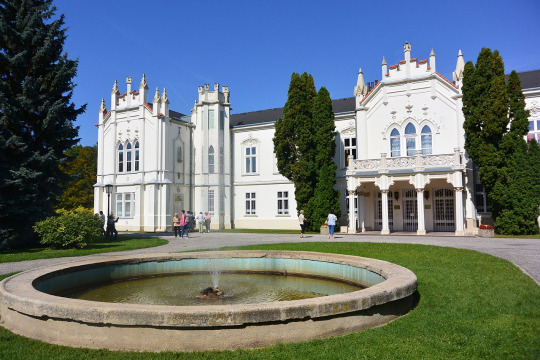
Noszvaj - De la Motte kastély (30 Ft)
A kastélyt 1774-78 között építette a báró Szepessy család, copf stílusban. Sajnos viszonylag hamar meg kellett tőle válniuk, és gróf Almásy Antal özvegye Vécsey Anna lett a szerencsés vásárló. Az ő második férje volt egy francia ezredes De la Motte, Mária Terézia udvarából, innen kapta a kastély a nevét. Az Almásyak pezsgő társasági és művészeti életet tartottak fent a belül francia stílusban berendezett kastélyban, majd a kiegyezés után több különböző család birtokában is volt. '44-ben a kommunista hatalom elűzi a tulajdonosokat, és a kastély 12 évig magára marad, majd némi tatarozás után '57-ben üdülőt nyitnak benne. Ekkor restaurálják a 200 éves frekókat, parketta burkolatot, korszerűsítik a villanyt, világítást. '72-ben a Heves megyei tanács átveszi az épületet teljesen befejezi a restaurációt és megnyílik a mai napig is látogatható kastélymúzeum. Szintén jelentős és látogatható angolkerttel rendelkezik, ha nem is akkorával mint a Brunszvik kastély. 2016-ban az egyik szárnyban 6 szobás kastélyszállót nyitottak, most is foglalható.

Fertőd - Esterházy kastély (100 Ft)
A mai Fertőd elődje egy Süttör nevű falu volt, ami a török uralom után a Nádasdyakhoz került, majd tőlük kamarai kezelésbe került, mivel részei voltak a Habsurg-ellenes rendi mozgalmaknak. 1681-ben aztán Esterházy Pál vette meg az elkobzott javakat a császári adminisztrációtól. A kastélyt Esterházy (Fényes) Miklós elképzelései és tervei alapján, több építészmester közreműködésével kezdték építeni 1720-ban, előtte már állt a helyén egy kisebb U alakú vadászkastély egyébként. A teljes épületegyüttes megépülése több, mint húsz évbe telt, de a teljes elkészültsége minden elemnek, a parkot is beleértve 1766-ban történt csak meg. Az Esterházyak művészetpárti tevékenysége miatt a kastély Magyarország egyik fő kultúrális központja volt a XVIII. század utolsó harmadában, 'Magyar Versailles'-ként is emlegették, már csak a stílusa miatt. A kastély elkészültével egyébként körülötte új település is született, neve Esterháza lett, jelenleg Fertőd egyik városrésze, de így hívják a mai napig. 1946-tól az egyik szárnyban Kertészeti Középiskola és Szakkollégium működik. Jelenleg a kastélyok tekintetében Magyarország legnépszerűbb turistalátványossága, évi több százezere látogatóval, melyből 50-60 ezer külföldi. Része a Nemzeti Kastélyprogramnak melynek során jelentős EU-s támogatás segítségével nagyszabású teljeskörű felújításon esett át, kívül-belül a parkot is beleértve. A kiállítások mellett, a nyári szezonban minden héten komolyzenei koncertek, hangversenyek kerülnek megrendezésre, vendégművészekkel és nagyzenekarokkal. Érdekesség, hogy az állam a kastélyban a mai napig fenntart egy lakosztályt az Esterházy család még élő tagjainak, közvetlen leszármazottainak.
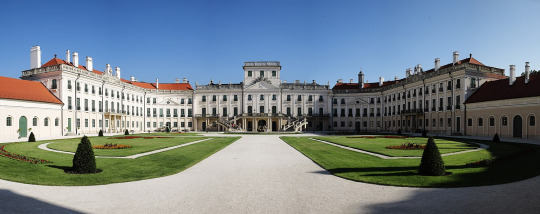
#bélyeg#stamp#magyarország#hungary#kastélyok II.#dudás lászló#hungarian castles#kastély megaposzt#1987#10 forint#20 forint#30 forint#100 forint#keszthely#festetics kastély#martonvásár#brunszvik kastély#beethoven#noszvaj#de la motte kastély#fertőd#esterházy kastély
7 notes
·
View notes
Text
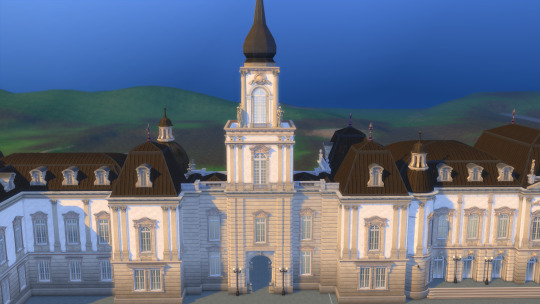


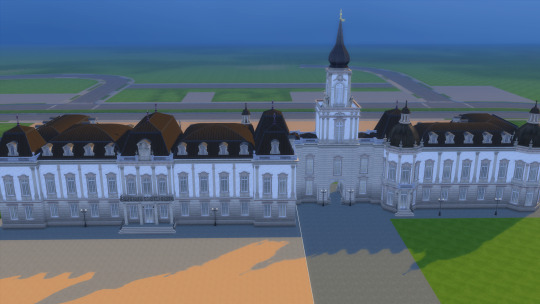

Beginning a new palace
Festetics Palace in Hungary was my inspiration ...
128 notes
·
View notes
Text

Keszthelyi Festetics kastély
Talajtakaró építési törmelékből.
24 notes
·
View notes
Photo

Vicky Krieps, Alma Hasun et Katharina Lorenz dans “Corsage” biopic de Marie Kreutzer - sur l'Impératrice d'Autriche dite Sissi (1854–1898) - novembre 2022.
0 notes
Note
A mulcsként kiszórt építési törmelék a keszthelyi Festetics-kastély pakjában tette be végleg a kaput nálam. Ez az ország egy kibaszott putri. S mint ilyen megérdemli a sorsát. Aki szerint itt bármi menthető az delíriumos lázálmokban fetreng.
Menthető az, de csak unortodox módszerekkel.
5 notes
·
View notes
Text
Franz Joseph Haydn (1732-1809) - String Quartet in A-Major, Op. 20 No. 6, IV. Fuga à 3 soggetti. Allegro. Performed by Quatuor Festetics on period instruments.
#franz joseph haydn#joseph haydn#classicism#classical music#string quartet#strings#period performance#period instruments#chamber music#quartet#violin#viola#cello#haydn#fugue#fuga
24 notes
·
View notes
Note
Has Empress Sisi ever fallen in love or had a lover? Thanks.
Hi! Short answer, yes and no. Longer answer:
When Elisabeth was around fifteen (some months before her engagement), she wrote a series of love poems dedicated to someone named "Richard", who died shortly after. It's assumed this man was someone who worked at the Ducal household (because at that age Elisabeth couldn't have known anyone outside her family and their entourage), but no one has ever been able to identify him, nor she ever talked about him in her later life: her love poems are really the only material evidence left of this first teen crush. And while in her biographies it's always a given that this was her first love, I personally think (and this is just my opinion) there's a possibility that perhaps these poems... were just poems. Like Taylor Swift writing love songs at fifteen when she had never dated anyone before. Whatever the case, these pieces must have been important for Elisabeth, since she kept them her whole life, and passed them over to her descendants.
She seems to have been in love with Franz Josef when they got engaged even if his position stressed her, as the very quoted "I love him so much, if only he were not the Emperor" shows (a quote that comes from Archduchess Sophie btw), and after they got married she wanted to spend as much time with him as possible and was in distress when she wasn't able to. They grew distant with time as Elisabeth found life at court more and more unbearable and started traveling abroad. Countess Mária Festetics, one of the empress' closest ladies-in-waiting, later said that "The Empress valued her husband and was deeply devoted to him. No... he did not bore her, that is not the right word. But she felt it to be natural that he took no part in her spiritual life and was unable to follow her flight to higher things (...) she respected him and liked him, but I doubt that she loved him". This is just her personal opinion and I don't think it should be taken as a fact, but it does show that in the later years of their marriage she didn't strike the people close to her as a particularly loving wife.
And lastly no, she didn't have any lover. We have no evidence of her ever having an affair other than unreliable gossip. For example, there were rumors about her friend Count Gyula Andrássy being her secret lover (and fiction writers love to depict him as such) but the truth is that they could've never had an affair because they were alone literally only once in the more than twenty years they knew each other. In a carriage ride. That lasted like fifteen minutes. Every other time they saw each other, they were accompanied by someone. Portraying them as lovers is a disservice to both of them (because how could possibly a man and a woman become friends for sharing the same political ideas, they must have been sleeping together!), and also just so boring.
Thank you for your question!
#empress elisabeth of austria#countess mária festetics#count gyula andrássy#franz josef i of austria#asks
31 notes
·
View notes
Text
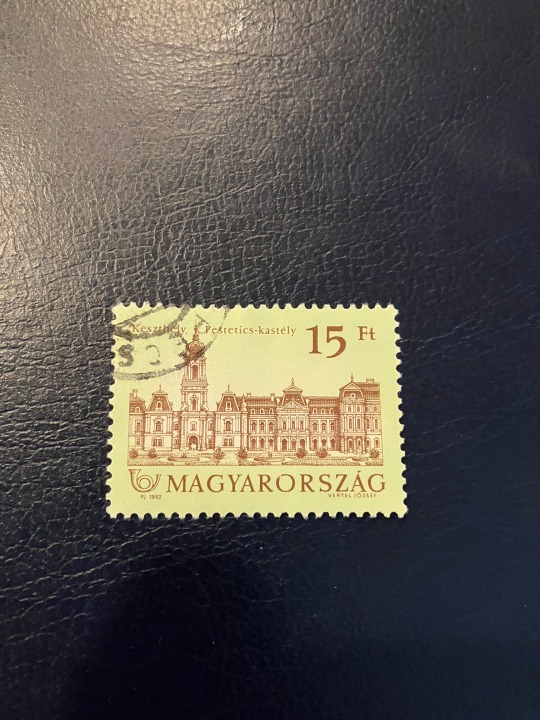
Habár az IGAZI Kastélyok sorozat valóban végetért, de nyilván egy ilyen éveken át tartó sikerszériára, már a 'konkurencia' is felkapja a fejét. Így történhetett, hogy a Festetics-kastélyt 1992-ben bélyegre vetette egy másik csúcstervezőnk, Vertel József is. A stílus kicsit más, talán kicsit hagyományosabb, mégis nekem modernebb érzetű. A kastély kidolgozottsága részletesebb, mint Dudásnál, viszont nincs olyan jellegzetes stílusjegy, mint az eredeti sorozat sűrű háttércsíkozása. Nem rossz, dehát azért sosem lesz az eredeti, talán nem véletlen, hogy magányos maradt, nem készült ilyen más kastélyokról, más értékben. Értéke sem jelentős, 50-100 forintért hozzá lehet jutni egy pecsételthez, kicsit többért a postatisztához.
#bélyeg#stamp#magyarország#hungary#vertel józsef#1992#kastély megaposzt#15 forint#festetics kastély#keszthely
4 notes
·
View notes
Text

Princess Josephine of Hohenzollern-Hechingen, Countess Festetics de Tolna
17 notes
·
View notes
Text


A Zeneműtár otthona 1954 és 1984 között a Pollack Mihály téren található Festetics-palota első emeletén volt. A rádió ostromakor, 1956 októberében e saroképületet több találat érte, jelentős károkat okozva a gyűjteményben.
Giacomo Meyerbeer A hugenották című operájának a lipcsei Peters kiadónál megjelent ének-zongora kivonata golyó által okozott sérüléssel. – Színháztörténeti és Zeneműtár
12 notes
·
View notes